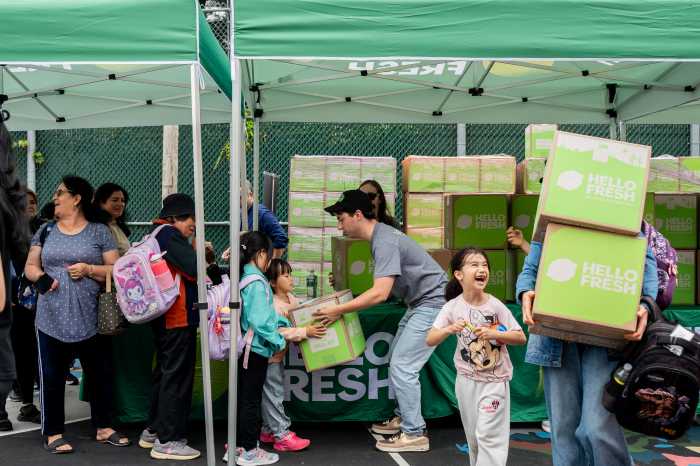Typing the phrase “#ramen” into Instagram’s search bar will result in 6.7 million posts, many of the ubiquitous foodie pic variety and some rather bizarre videos of people eating what can only be described as python-like noodles. As more and more ramen shops spring up around New York City, it appears that everyone, from the blogger with a following in the millions to your 85-year-old grandmother, knows and loves ramen.
Behind this ostensibly overnight food trend, though, are hundreds of years of rich cultural history and an increasing wave of globalization.
Ramen-bering the past
In order to fully grasp the reputation of ramen as a Japanese essential, we must first turn slightly westward, to China.
“There’s a history of noodles in China going back thousands of years,” explains Barak Kushner, who teaches Japanese history at the University of Cambridge and authored the 2012 book “Slurp! A Social and Culinary History of Ramen, Japan’s Favorite Noodle Soup.” He notes that noodle technology was initially pioneered by Buddhist monks and spread over centuries to Japan. “By the 17th and 18th centuries, there was a love of soba noodles in Edo (Tokyo’s forerunner),” says Kushner. Bowls of noodles became a popular serving option, and over time, these came to include soup.
As industrialization took off in Japan during the 19th century, many Chinese people moved to the country, and they brought with them new noodles, made with wheat for a springy, al dente bite. Right around 1910, Japanese workers, who were the primary consumers of the inexpensive and easy noodle bowls, began to crave a meatier, more caloric meal, and what we now call ramen was born.
In the wake of World War II, the United States supplied Japan with large quantities of wheat to help with food shortages. This led to the government-encouraged production of wheat noodles and therefore ramen. The dense, traditionally working-class dish took off in the post-war landscape and quickly spread outside the major cities.
Finally, in 1958, instant ramen, a product that any current or former college student knows all too well, was introduced and rapidly became a sensation, proving an ideal on-the-go, cheap meal for a nation that was still rebuilding.

Japan goes global
Ah, the 80s: a decade of shoulder pads, hair metal and a whole new wave of culturally influential movies. As the world watched Molly Ringwald pull out a bento box of sushi in “The Breakfast Club” in ‘85 and witnessed Charlie Sheen hand-make nigiri in 1987’s “Wall Street,” an ongoing fascination with all things Japanese officially began. Suddenly, the small island nation was a major world player, especially in the food scene.
“Japan was economically hurting in the ’80s,” says Kushner, “but its gross national cool began to spread internationally.”
At the same time, there was a boom in “B-Class gourmet” domestically, and a more culinary approach was taken to ramen, with shops popping up all over and different regions branding varying ingredients.
Of course, instant ramen had already grown popular around the world, and especially in the United States, but it was still at that point written off, what with its 60 cent price tag and “just add water” recipe, as a fast food embraced only by those who couldn’t afford anything else.
As Japan’s cultural influence grew, though, it “gained a food culture beyond sushi,” as Kushner notes, and the gourmet treatment of ramen happening in Asia slowly made its way to the States.
Ramen-cing New York
The past few years have seen a spike in the number of ramen restaurants around the city, and the trend doesn’t show any sign of slowing.
With different forms of noodle soup, from pho to matzo ball, and a pasta culture already popular worldwide, ramen has been well-received in the west. “It’s cheap, accessible, and doesn’t require changing your taste or palate at all,” says Kushner. “Ramen is like the sandwich of Asia,” universal but easily adaptable to local flavors and ingredients.
“When I first started out, ramen really had no respect,” says Ivan Orkin, the owner and chef behind Ivan Ramen. “People were surprised that a fine-dining chef would ‘lower himself’ to ramen.” Orkin, a native New Yorker, long identified with Japanese culture and opened his first two ramen restaurants in Tokyo before writing a cookbook and opening up two New York locations. He attributes much of the noodle dish’s success in America to the rise of comfort food in the culinary world and sees ramen as “leading the pack.”
“I think in New York, it’s taken off almost more than anywhere else,” says Orkin. “Besides anything else, ramen is just really fun, and once you have it, you’re kind of hooked.”
In the same way that an interest in Japanese culture once paved the way for ramen’s popularity, the dish’s success is now leading to increased interest in Japan. “Ramen is an extension of Japanese culture,” says Orkin, “and its popularity has caused many people who would never even think of Japan to want to go visit.”
Ichiran, another favorite in the ramen scene, opened its first U.S. location in 2016 in Bushwick following the success of its 65 Japanese shops. In addition to bringing its signature and flavorful ramen to the city, the restaurant chain made a point of staying true to its Japanese roots in its culture and aesthetic.
“The thing people look at here is the design,” says Ichiran publicist Kayla Copeland, noting the venue’s solo booths, no tip policy, and minimal server interaction (guests see only a waiter’s hands). “It’s weird and different but the kind of weird and different that you want.”
Ichiran, which opened a second New York location in midtown last year, and recently announced a Times Square outpost, slated to open in winter of 2019, hopes that its New York presence will help get the rest of America on the ramen train.
“I think people have been afraid to try it in other parts of America,” says Copeland, “but New York is the perfect place to start.” The chain plans to expand across the country in the coming years.
And even with so many ramen destinations in New York, none seems too worried about competition. “The beauty of ramen is that you can love Ivan and you can love Ichiran or Ippudo,” says Orkin, alluding to the different styles and flavors that each shop produces. “I never think there’s too much competition.”




































